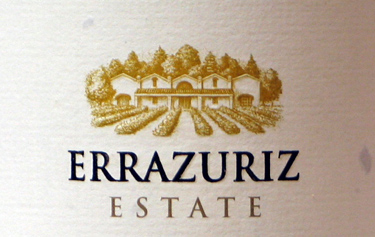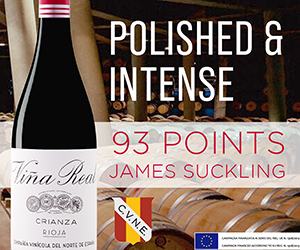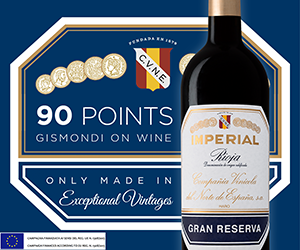What do you do when the name of your winery no longer attracts the immediate attention of consumers?
It's a question facing many New World producers who have global aspirations.
How do you differentiate your chardonnay or cabernet from hundreds of others? Calling it a "reserve" or a "special selection" (and slapping on a different label) no longer carries the cachet it once did.
That's why more and more New World producers are investigating the European notion of terroir. That French term speaks to the combination of soil, climate, geography, vines and human intervention as it affects a wine, but most of all it is about place or origin.
Agustin Huneeus, owner of Chile's Veramonte winery, puts it this way: "Great wine is a reflection of the care and uniqueness of its terroir. At Veramonte we are committed to nurturing this tie of wine to its soil, to its 'somewhereness,' so that each of our wines reflect the full expression of our vineyards."
This Tuesday, the Sutton Place Hotel and 29 visiting Chilean wineries will host a day of "somewhereness" to explore the very latest in Chilean regions and the development of meaningful appellations.
It's an important appearance for the Chileans, who have recently had little or no growth in the B.C. market after a decade of torrid sales.
Organizers expect a strong turnout of both trade types and the public for various seminars and tastings planned throughout Tuesday. The two major public events are Vinos de Excellencia de Chile, a blind tasting conducted by the West Coast tasting panel of Wine Access magazine (it's at 5:30 p.m.), and the 7 p.m. grand tasting session featuring 29 wineries pouring 120 products.
All events take place at the Sutton Place Hotel. To reserve, call Ticketmaster at 604-280-4444; proceeds will benefit the B.C. Cancer Agency for Care and Research.
If you are unable to attend the tastings, look for these appellation-based wines and many more in Chilean displays throughout October in B.C. liquor stores.
To start, a delicious Veramonte chardonnay grown at Casablanca, a small coastal valley cooled by winds that sweep off the cold Pacific Ocean. Its apple/mineral/nectarine fruit is typical of the valley, and its creamy textures and flavours of vanilla, lees and honey in the finish make it fun to sip.
The Santa Rita Reserva Merlot comes from the much-respected '99 vintage. You'll love its rich, plummy fruit and black pepper edgings. Soft and silky, this is Maipo styling at its best, and very affordable.
The Montes cabernet takes us 200 kilometres south of Santiago to the Curico Valley. The winery has more than 160 hectares planted there on ungrafted (no rootstock), phylloxera-free vines. Enjoy its cool, resiny cassis flavours mixed with hints of barnyard, spice and vanilla. The styling is more Bordeaux than California, and works best with food.
I have stood in San Pedro's Castillo de Molina vineyard at Lontue, which at 2,840 acres is still the largest single vineyard block in South America. Look for plenty of soft blackberry, plum and coffee flavours, with just a wisp of herbal cassis in the finish. It's ready to drink now.
Caliterra's syrah is the first from its L'Arboleda estate in the Colchagua Valley, an important centre of red wine making with the potential to become the Medoc of Chile. The syrah has spicy, meaty, gamy, blackberry aromas and flavours, and a dusting of smoked bell pepper. The textures are chewy, but it is well-balanced and easy to drink.
The Santa Carolina Cabernet Sauvignon Reserva is from the San Fernando area, part of the larger zone of Colchagua in the Central Valley. The wine has a cool, minty, cassis nose with almost identical flavours and strong crushed-leaf overtones. It is lean, yet still round and drinkable, and will appeal to those who prefer their cabernet on the herbal side.
The finale is a very young Errazuriz 2000 cabernet from the Valle de Aconcagua, which lies about 150 kilometres north of Santiago. The valley is a warm site considered by many to be prime red wine country. This cabernet is grown at the El Ciebo Estate only a few miles from the Panquehue home of the Errazuriz Don Maximiano Estate.
The wine has a herbal, peppery, spicy aroma and a whack of black cherry and cassis fruit. The tannins are ripe and soft for a young red, allowing you to drink it now with food, but you could easily cellar it for another year or two.
Weeken Wine Tasting : CHILEAN APPELLATIONS
Producer: Veramonte 1999 Chardonnay
Alto de Casablanca
Price: $15.95
Stock No.: 494443
Score: 16/20
Comments: Delicious, fruit-driven.
Producer: Santa Rita 1999 Merlot Reserva
Valle del Maipo
Price: $15.95
Stock No.: 375790
Score: 15.5/20
Comments: Rich plummy flavours.
Producer: Montes 1998 Cabernet Sauvignon
Curico Valley
Price: $13.95
Stock No.: 464479
Score: 13.5/20
Comments: Lean, firm, Bordelais-style.
Producer: San Pedro Castillo de Molina
1998 Cabernet Sauvignon, Lontue
Price: $16.95
Stock No.: 339176
Score: 15.5/20
Comments: Delicious black cherry fruit and barnyard aromas.
Producer: Caliterra 1999 Syrah, Valle de Rapel
Price: $13.95
Stock No.: 576892
Score: 14/20
Comments: Meaty, peppery, chewy blackberry fruit.
Producer: Santa Carolina
1998 Cabernet Sauvignon Reserva
Valle de Fernando
Price: $14.95
Stock No.: 275925
Score: 13.5/20
Comments: Simple, soft, herbal.
Producer: Errazuriz 2000 Cabernet Sauvignon
Valle de Aconcagua
Price: $13.95
Stock No.: 284125
Score: 14/20
Comments: Elegant, young, fruity.
Written By: ag

 quicksearch
quicksearch






